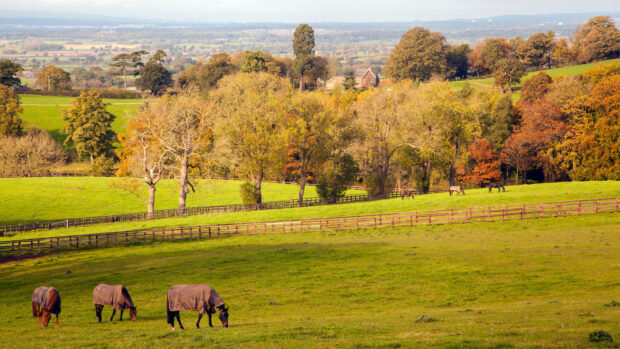In Horse & Hound's recent Winter Feeding Guide, published in association with Spillers, we took a look at the debate surrounding sugar — from what exactly it is, to whether we should fear it
Sugar has become a dirty word in recent years. So with ever-growing concerns over equine obesity and laminitis, and with EMS (Equine metabolic syndrome) on the rise, is the sugar fear-factor really justified? We investigate…
1. What is sugar?
Sugars are carbohydrates and can be broadly categorised according to the number of units they contain. Monosaccharides or simple sugars consist of just one unit and include glucose, fructose and galactose. Disaccharides consist of two units and include sucrose (the sugar that goes in your tea), lactose (milk sugar) and maltose (which makes Maltesers taste so good). Oligosaccharides consist of multiple units and includes fructo-oligosacchradies, found in vegetables and forages.
2. Sources of sugar
Athough many owners agonise over the amount of sugar that goes into their horse’s feed bowl, you may be surprised to learn that forage is in fact the largest source of sugar in the horse’s diet; even for those without access to grazing. Grass can contain up to 7.5% sugar and 50% water-soluble carbohydrates (WSC), which means for every kilogram (dry matter) of grass eaten, the horse could consume up to 75g of sugar and 500g of WSC. Studies have shown that ponies turned out un-muzzled can consume up to 5% of their bodyweight in grass. If the same applies to a 500kg horse, this would equate to 1.9kg of sugar and 12.5kg of WSC per day from grass alone. But what about those without turnout? Hay may contain in excess of 20% WSC, so if fed at 10kg per day, could easily provide more than 2kg of WSC. Compound feeds typically contain 5-7% sugar but, importantly, are consumed in much smaller quantities. So, in real terms, the recommended ration of mix or cubes for a500kg horse in light work would provide just 150-210g of sugar.
3. Can horses be allergic to sugar?
No, glucose is vital for life. In fact, it’s the primary energy source utilised by the brain. Even if the sugar levels in the diet are low, the horse’s body converts other nutrients to glucose to meet demand. True feed allergies in horses are rare and when they do occur, they are in response to a specific type of protein, not sugar. Although high levels of energy and WSC in grass may sometimes be responsible for putting a spring in your horse’s step, behavioural changes “diagnosed” as an intolerance to sugar are most commonly caused by feeding higher levels of cereal starch.
4. Molasses
Molasses can be a concern for horse owners especially if they have a horse or pony prone to laminitis. Molasses is a by-product of either sugar cane or sugarbeet processing and, contrary to popular belief, is not pure sugar. Having said that, it’s the rate at which molasses is fed rather than its sugar content per se that’s important. Molasses and its variants such as molglo (a blend of molasses and oil) and molaferm contain approximately 30-54% sugar and are typically added to feeds at 6-10%, thus contributing just 2-5% sugar to the finished feed. Put simply, feeds containing molasses are not automatically high in sugar and, equally, molasses-free feeds are not sugar free. For laminitics (including those with EMS) and cushingoid horses/ponies it is the total amount of sugar in the diet rather than the exclusion of individual ingredients that is most important. However, several feed companies now offer molasses-free alternatives for those who seek to avoid it.
5. Carrots and treats
Many owners are concerned or even advised that carrots, apples and equine treats contain high levels of sugar and should be avoided, particularly for excitable or laminitic horses. In truth, carrots consist of approximately 85% water, which means that each carrot actually contains a negligible level of sugar and calories. Although in percentage terms treats may seem high in sugar, the quantity in which they are fed again means they contribute very little sugar to the total diet. Although they shouldn’t be fed by the bucketful, treating your horse or pony to a few carrots (or other treats) won’t do any harm. Remember, everything in moderation.
6. Should we fear sugar?
Horses evolved to consume grass, which produces sucrose as it primary fuel source. Hence they are actually well adapted to digesting and utilising some sugar in their diet. Therefore in healthy, exercised horses in ideal body condition, sugar shouldn’t cause a problem. However, there are undoubtedly some horses and ponies that do need a low sugar diet, particularly those prone to laminitis. When this is the case, understanding rather than fearing sugar holds the key to successfully managing the diet. Although, it is wise to give consideration to what goes into your horse’s feed bowl when it comes to sugar.


